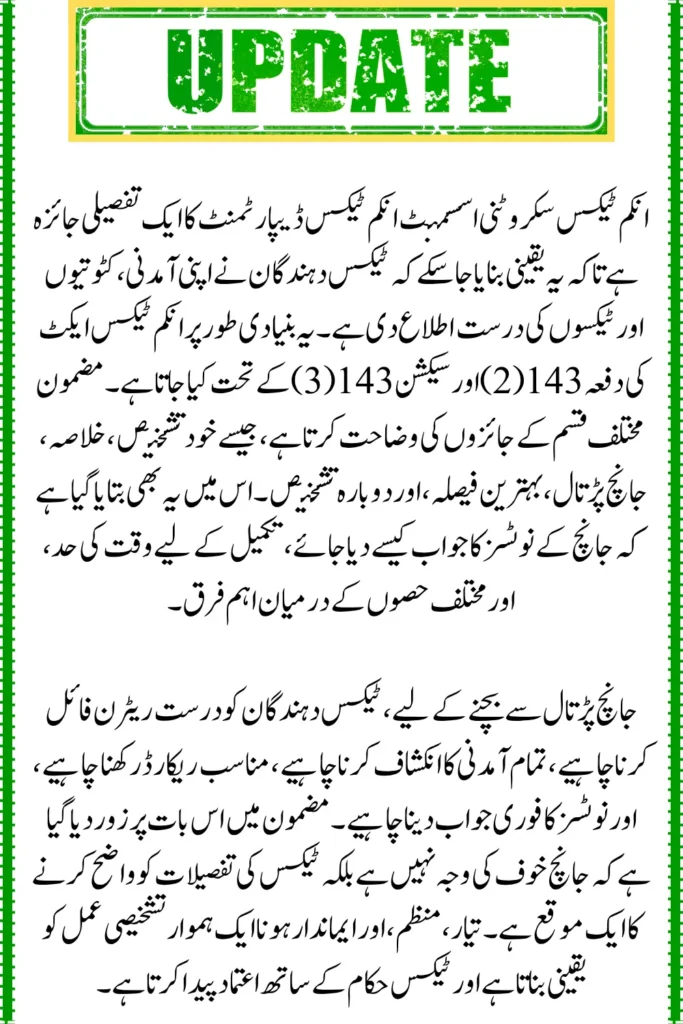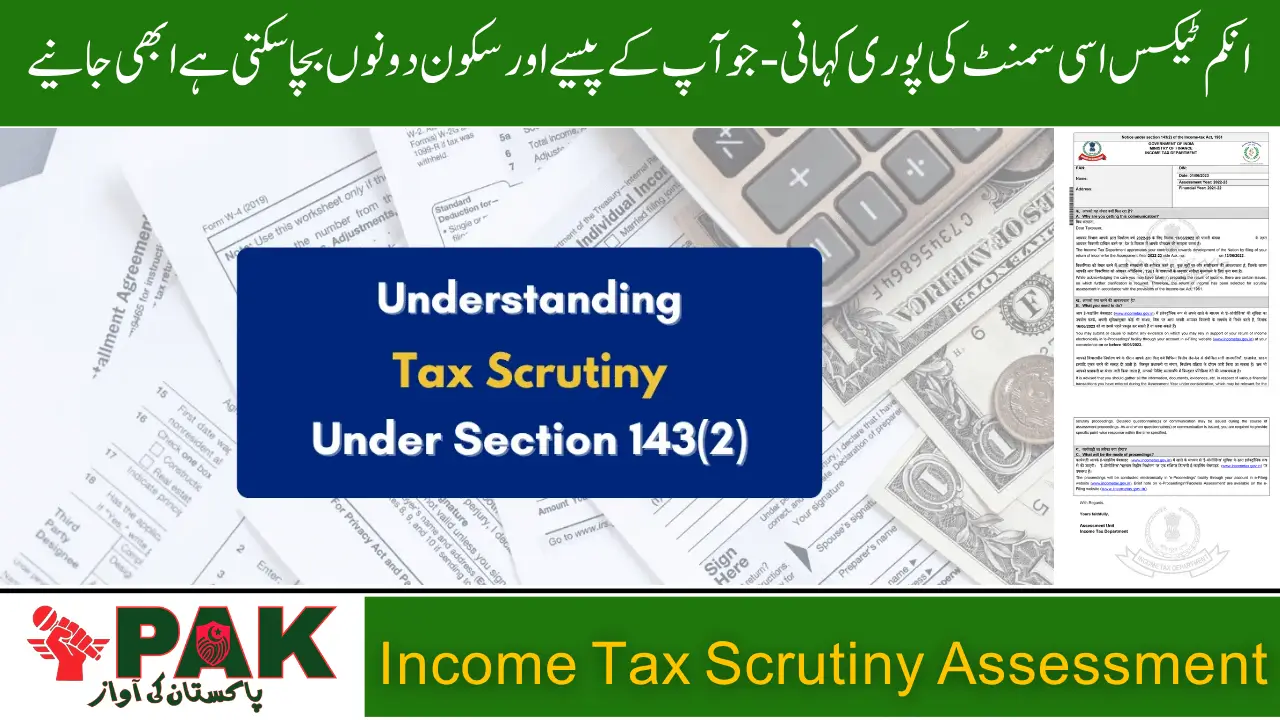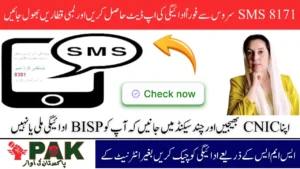Income Tax Scrutiny Assessment
Income Tax Scrutiny Assessment is a detailed review by the Income Tax Department to verify the accuracy of your income tax return. The main goal is to ensure all income sources, deductions, and claims are correctly reported. During scrutiny, the department may ask for documents, bank statements, or other proof to confirm the details you have shared in your return. It helps maintain transparency and prevent tax evasion.

There are two main types of scrutiny assessments: limited scrutiny and complete scrutiny. In limited scrutiny, only specific points are checked, while complete scrutiny covers the entire return. Respond promptly to all notices to avoid penalties or delays. Keep all financial records ready and cooperate with the assessing officer. A smooth and timely response ensures faster case closure and builds trust with tax authorities.
You Can Also Read: CM Punjab Himmat Card Phase 3 Launched 35,000 New Beneficiaries Added
Types of Income Tax Assessments
Types of Income Tax Assessments in India are the different methods the Income Tax Department uses to verify the accuracy of income tax returns. These assessments help ensure taxpayers report income honestly, claim valid deductions, and pay the correct tax. Each assessment type serves a unique purpose — from quick checks to detailed investigations.
- Self-Assessment (Section 140A): Taxpayers calculate and pay their tax before filing the return.
- Summary Assessment (Section 143(1)): The department checks for basic errors or mismatches in the return.
- Scrutiny Assessment (Section 143(3)): A detailed review of income, deductions, and taxes paid.
- Best Judgment Assessment (Section 144): Applied when a taxpayer fails to file a return or provide required details.
- Reassessment (Section 147): Conducted when income is suspected to have been underreported or missed.
Income tax assessments maintain transparency and ensure accurate tax compliance.
You Can Also Read: CM Punjab Himmat Card Phase 3 Launched 35,000 New Beneficiaries Added
Scrutiny Assessment Under Section 143(2)
Scrutiny Assessment under Section 143(2) is a detailed examination of your income tax return by the Income Tax Department. It ensures that the income declared, deductions claimed, and taxes paid are accurate and truthful. When your return is selected for scrutiny, the department issues a notice under Section 143(2), asking you to provide documents or explanations to support the information in your return.
- Conducted under Section 143(3) after a notice under Section 143(2) is issued.
- The main goal is to verify income, deductions, and claims made in the tax return.
- You must respond to the notice within the given time and provide all requested details.
- If you fail to cooperate, the officer may make a best judgment assessment under Section 144.
- The assessment must be completed within the time limit prescribed under Section 153.
Scrutiny assessment ensures your income tax return is accurate and complies with tax laws.
You Can Also Read: Benazir Taleemi Wazaif, October 2025, Complete Guide and Payment Schedule
Detailed Scrutiny Under Section 143(3)
Detailed Scrutiny under Section 143(3) is an in-depth examination of an income tax return by the Income Tax Department. The purpose is to confirm that the taxpayer has reported the correct income, claimed genuine deductions, and paid the right amount of tax. This process begins after a notice under Section 143(2) is issued, calling for documents, explanations, or evidence to verify the return.
- Conducted to verify the accuracy and truthfulness of income, deductions, and exemptions.
- The taxpayer must submit supporting documents and respond within the specified time.
- The Assessing Officer reviews all proofs and cross-checks details with available records.
- If discrepancies arise, the officer can adjust income or disallow false claims.
- If the taxpayer doesn’t cooperate, a best judgment assessment under Section 144 may follow.
Detailed scrutiny under Section 143(3) ensures complete accuracy and transparency in income tax reporting.
You Can Also Read: Benazir Taleemi Wazaif, October 2025, Complete Guide and Payment Schedule
How to Handle an Income Tax Scrutiny Notice
How to Handle an Income Tax Scrutiny Notice requires calm action and a timely response. Receiving a notice under Section 143(2) means the Income Tax Department wants to verify details in your return. It doesn’t always indicate wrongdoing; it’s a chance to clarify and validate your financial information.
- Read the notice carefully to understand the reason and documents required.
- Verify your details like PAN, assessment year, and return filing date.
- Gather and organize all supporting documents such as bank statements, Form 16, investment proofs, and receipts.
- Respond online within the deadline through the e-filing portal to avoid penalties.
- Appear before the Assessing Officer or submit documents electronically, if required.
- Seek help from a tax professional for accurate representation and compliance.
Respond quickly, stay organized, and cooperate fully to close your scrutiny assessment smoothly.
You Can Also Read: Electric Buses Arrive in Faisalabad, Check Routes and Fares
Time Limit for Completion of Scrutiny Assessment
The Time Limit for Completion of the Scrutiny Assessment is defined under Section 153 of the Income Tax Act. It specifies how long the Income Tax Department can take to complete a scrutiny assessment under Section 143(3). The time limit depends on the assessment year and ensures that cases are resolved promptly without unnecessary delay.
- For Assessment Year 2017–18 or earlier, must be completed within 21 months from the end of the assessment year.
- For Assessment Year 2018–19, must be completed within 18 months from the end of the assessment year.
- For Assessment Year 2019–20 onwards, it must be completed within 12 months from the end of the assessment year.
The Income Tax Department must complete scrutiny assessments within the prescribed time to ensure fairness and timely resolution.
You Can Also Read: Electric Buses Arrive in Faisalabad, Check Routes and Fares
Key Differences Between Section 143(1), 143(2), and 143(3)
Key Differences Between Section 143(1), 143(2), and 143(3) lie in the level of examination and purpose of assessment under the Income Tax Act. These sections define how the Income Tax Department verifies and processes your return — from basic checks to detailed scrutiny.
- Section 143(1): It is a preliminary or summary assessment. The department performs basic checks for errors, mismatches, or incorrect claims and processes refunds or tax demands automatically. No personal interaction is required.
- Section 143(2): This section comes into play when the department selects a return for scrutiny. A notice is issued asking the taxpayer to provide documents or explanations supporting the information filed in the return.
- Section 143(3): It involves a detailed scrutiny assessment. The Assessing Officer examines all submitted proofs, verifies income, deductions, and claims, and determines the correct taxable income and tax liability.
Section 143(1) is a basic check, Section 143(2) initiates scrutiny, and Section 143(3) completes detailed verification.
You Can Also Read: Suzuki Alto Installment Offers, Compare Plans and Save
How to Avoid Getting a Scrutiny Notice
Avoiding an income tax scrutiny notice starts with a clean, honest filing. Keep your return simple. Show all income. Match TDS and bank records. File on time and e-verify.
- File the correct ITR form and answer all questions.
- Report all income sources (salary, interest, rent, capital gains).
- Reconcile the TDS shown in Form 26AS with your ITR.
- Keep proof for deductions and exemptions (receipts, bills, certificates).
- Maintain clear bank statements and explain large deposits.
- Avoid large unexplained cash transactions.
- Disclose foreign income or assets if applicable.
- Get an audit done when the law requires it.
- Don’t claim deductions that lack proper documents.
- Use consistent figures across returns, TDS, and bank records.
- E-file and e-verify your return promptly.
- Keep digital copies of all supporting documents for at least 6 years.
- Consult a tax professional for complex transactions or high-value deals.
File accurately, keep proofs, and stay consistent to reduce the risk of a scrutiny notice.
You Can Also Read: Suzuki Alto Installment Offers, Compare Plans and Save
Conclusion: Be Prepared, Not Scared
Getting an income tax scrutiny notice is not always bad. It simply means the department wants to verify your details. Stay calm and respond honestly. Keep all financial records and proofs ready before filing your return. When you file correctly and pay your taxes on time, there’s nothing to fear.
Always double-check your ITR for accuracy and match it with Form 26AS and bank records. If you receive a notice, reply within the deadline and provide clear explanations. Being organized and transparent builds trust with the tax department and helps close the assessment smoothly.
You Can Also Read: PM E-Bike Scheme 2025, E-Balloting Results Announced Check Winners List
FAQs on Income Tax Scrutiny Assessment
What is an Income Tax Scrutiny Assessment?
It is a detailed check by the Income Tax Department to verify the correctness of your income, deductions, and taxes declared in your return.
Why do I get a Scrutiny Notice under Section 143(2)?
You may get a notice if there are mismatches in your return, high-value transactions, or incomplete income disclosure.
How should I respond to a Scrutiny Notice?
Read the notice carefully, gather the required documents, and respond online within the deadline through the Income Tax portal.
Can I avoid getting a Scrutiny Notice?
Yes. File your ITR correctly, report all income, match TDS details, and keep proofs for deductions and investments.
What happens if I ignore a Scrutiny Notice?
Ignoring a notice can lead to penalties, interest, or a best judgment assessment under Section 144 by the tax officer.
You Can Also Read: PM E-Bike Scheme 2025, E-Balloting Results Announced Check Winners List








